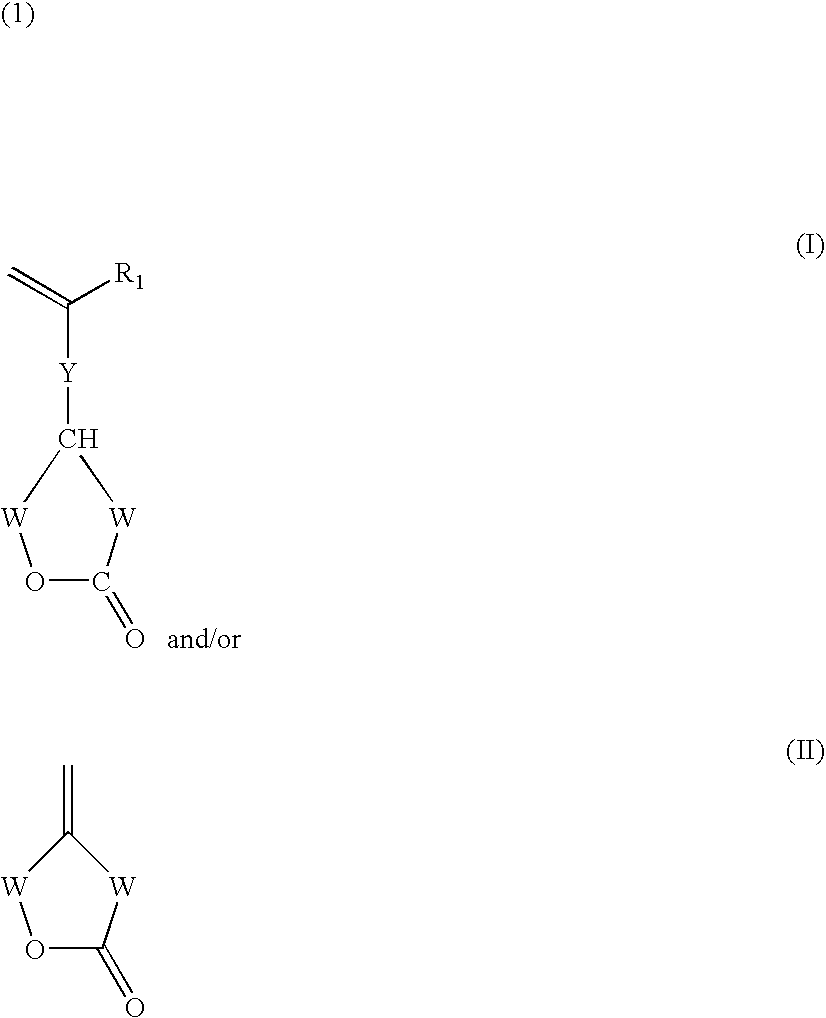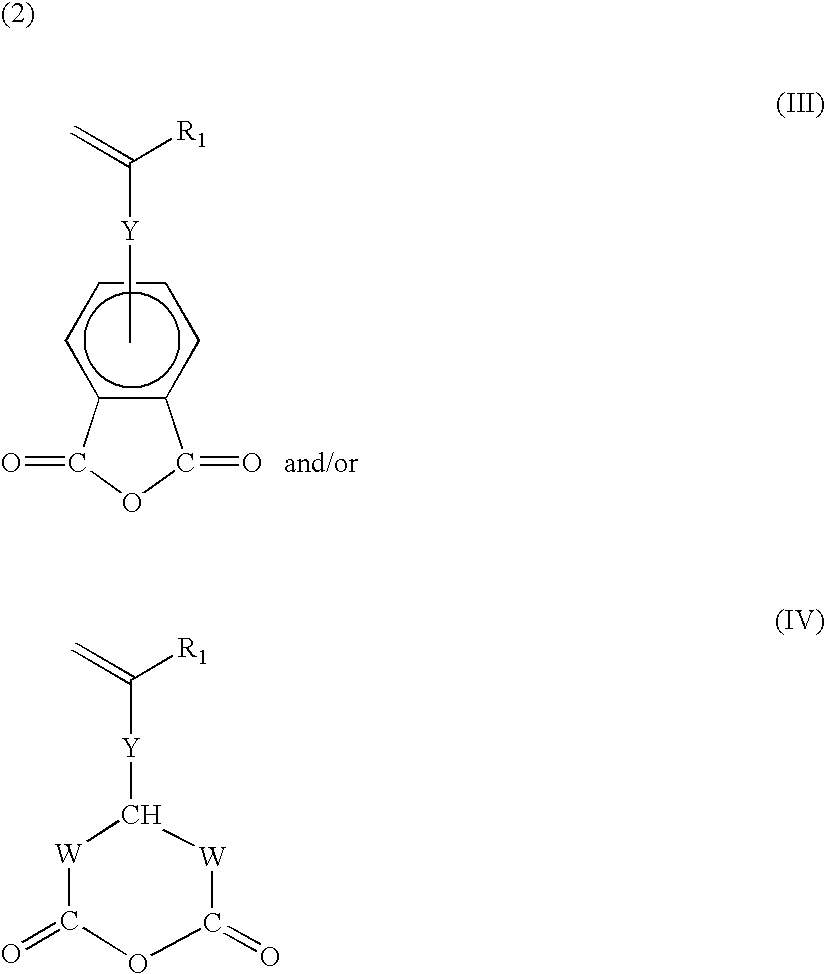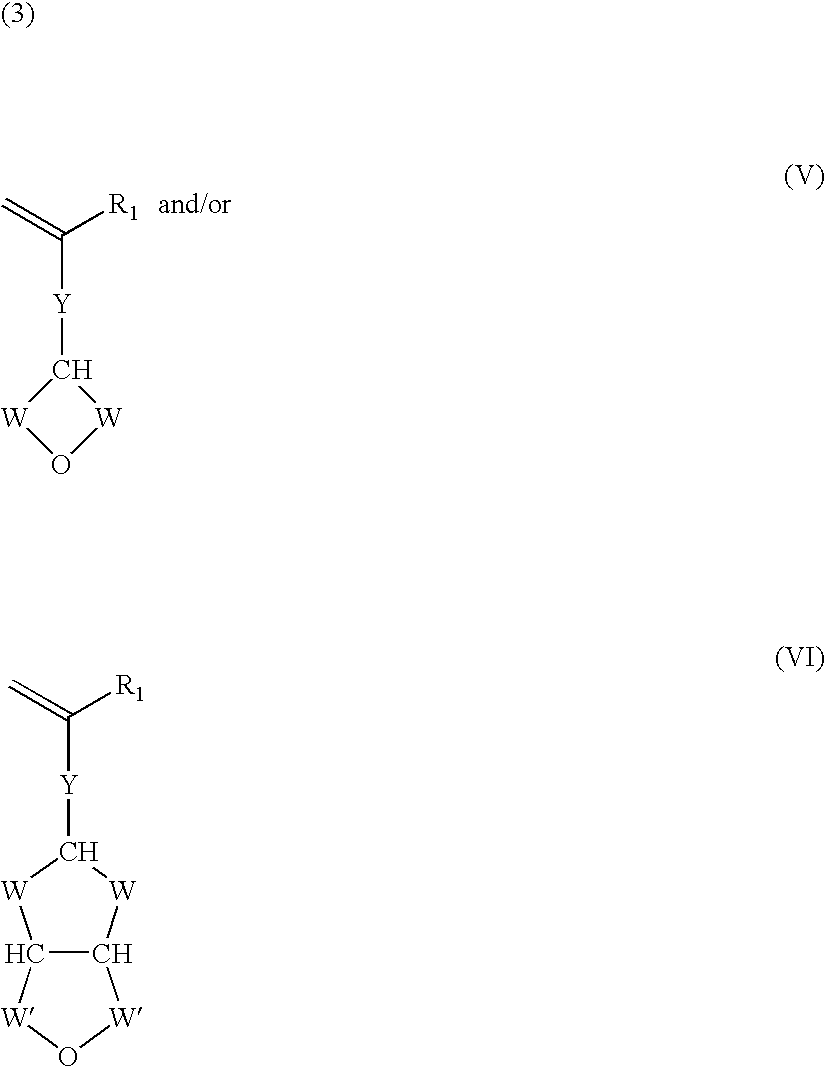Functionalization of silicones and anti-adhesive coatings made therefrom
a technology of silicone and anti-adhesion coating, which is applied in the direction of lignin derivatives, separation processes, other chemical processes, etc., can solve the problems of incomplete gelling of reaction medium, difficult to obtain final products, namely functionalized organosilicon compounds, and difficulty in particular harmful to functionalized silicone oils
- Summary
- Abstract
- Description
- Claims
- Application Information
AI Technical Summary
Benefits of technology
Problems solved by technology
Method used
Image
Examples
— example 3
Procedure for counter—Example 3
66 g (531 mmol =1.05 eq) of VCMX and the amount of platinum required in the form of the Karstedt catalyst are loaded into a 100 ml reactor. The reaction mixture is then heated to 90° C. 34 g (506 mmol=1 eq) of M′2 are then poured dropwise into the reactor. The reaction mixture gels while the M′2 is poured in.
— example 4
Procedure for counter—Example 4
In this counter-example, functionalization of M′2 with VCMX is carried out, in accordance with the teaching of U.S. Pat. No. 6,365,696, according to a process of homogeneous catalysis involving sodium acetate as catalyst.
66 g (531 mmol=1.05 eq) of VCMX, the amount of platinum required in the form of the Karstedt catalyst and the sodium acetate are loaded into a 100 ml reactor. The reaction mixture is then heated to 90° C. 34 g (506 mmol=1 eq) of M′2 are then poured dropwise into the reactor over 5 h. During the synthesis, the progress of the reaction is determined by the disappearance of the ≡SiH units and the possible disappearance of the epoxy functions is followed by potentiometric measurement. When all the ≡SiH units have reacted, the reaction mixture is filtered. The viscosity, which is already high at the end of the reaction, shows that some of the epoxy functions have polymerized (loss estimated at 7.9%).
All the results obtained during the ...
example 4
Counter-Example 4 corresponds to the process according to U.S. Pat. No. 6,365,696 B (homogeneous phase, basic catalyst: sodium acetate); it shows that the use of a base which is not an inorganic non-nucleophilic base, as catalyst, gives poor results as regards the loss of epoxy and the viscosity.
PUM
| Property | Measurement | Unit |
|---|---|---|
| molar ratio | aaaaa | aaaaa |
| total mass | aaaaa | aaaaa |
| weight | aaaaa | aaaaa |
Abstract
Description
Claims
Application Information
 Login to View More
Login to View More - R&D
- Intellectual Property
- Life Sciences
- Materials
- Tech Scout
- Unparalleled Data Quality
- Higher Quality Content
- 60% Fewer Hallucinations
Browse by: Latest US Patents, China's latest patents, Technical Efficacy Thesaurus, Application Domain, Technology Topic, Popular Technical Reports.
© 2025 PatSnap. All rights reserved.Legal|Privacy policy|Modern Slavery Act Transparency Statement|Sitemap|About US| Contact US: help@patsnap.com



